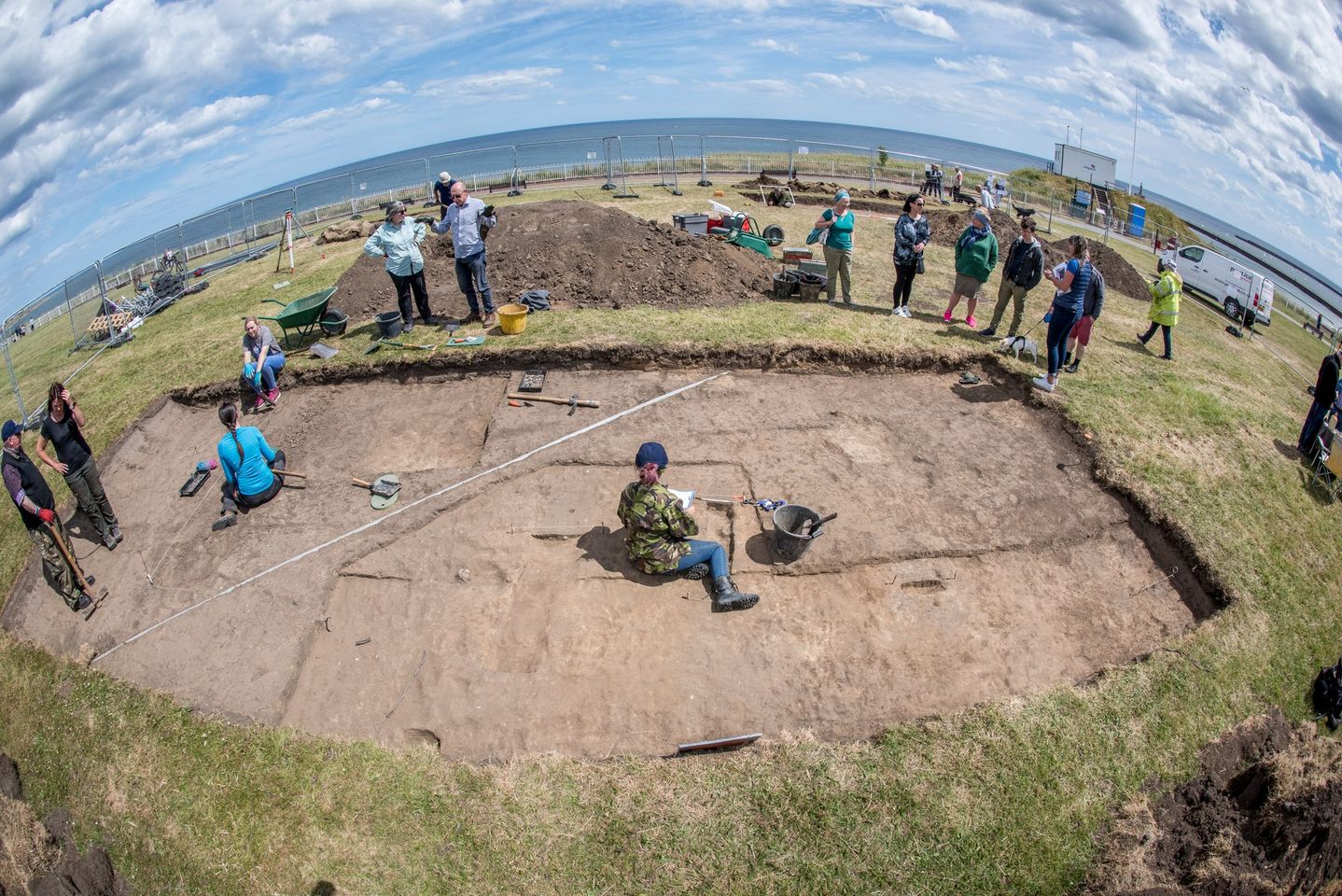
Remembering the Coast at War
Through the centuries, the North East coast has played a significant role in times of conflict and has formed a key part of the country’s wider defence strategies for land and sea. Evidence of gun batteries located at Roker, Sunderland, date back as early as 1759. However, it is during the two world wars that the Tyne to Tees coast provided a critical role in coastal sea defences. During the project, along with local residents and volunteers, the team at Tees Archaeology has spent time digging deeper into some of the yet-untold stories of a Coast at War.
Cliffe Park is now a pleasant, grassed area on the cliffs at Roker. However, it was an area used intensively by the military for many centuries to protect approaches to the mouth of the River Wear and Sunderland harbour. The first known instance of a gun battery at Roker was in 1759 when six guns were placed here. In 1894, three 64-pounder rifled muzzle loading guns were positioned on site, although these had been removed by 1905. In 1917, guns were installed again, and for the Second World War two six-inch guns were mounted in the area that is now used for seating.
The archaeology team undertook a two-week community excavation of the Gun Battery site and made some valuable discoveries. Alongside finds that included a military uniform button (dated 1875), gun cartridges, 19th Century pottery and glass fragments, eagle-eyed volunteers spotted the hessian imprints of former sandbag configurations, revealing the lost location of the WW1 gun placements.
Acoustic Mirrors
Arriving into a wet and windy October, the team found themselves digging through a different set of trenches, this time in Clavering, Hartlepool. On 27th November 1916 Lt Pyott flying a BE2C from Seaton Carew airfield shot down Zeppelin L34 over the coast at Hartlepool. This and other Zeppelin attacks brought about a decision to build a chain of ‘acoustic mirrors’ along the north-eastern coast of Britain. It was hoped that these would pick up the sound of approaching Zeppelins by reflecting sound into a microphone which could be moved to identify where the noise was coming from and at what height. This information meant that people could be warned, and defences alerted. Six sound mirrors were built on the North East coast but only three survived – at Boulby, Redcar and Fulwell near Sunderland.
One of the demolished sound mirrors was sited in fields at Springwell, Hartlepool. This land was developed into the Clavering estate in the 1960’s and the site of the sound mirror lies on Clavering Road in the heart of the Clavering community.
Sadly, no remaining evidence of the Sound Mirror was found during the excavation. However it was wonderful to meet lots of local residents who came along to the excavation site during the week and who shared their stories and memories of the sound mirror when it was in situ. Over 200 school children from Clavering Primary School and other schools, worked with sound artist Rob Smith to explore the sounds of Clavering through a range of listening devices designed to mimic the sound mirror.
The 16th December 2024 marked the 110th Anniversary of the Bombardment of Hartlepool, the first place on mainland Britain to be bombed by the Germans during World War 1. On a very misty morning on the 16th December 1914, over 100 people lost their lives as more than 1000 shells rained down over the Headland and on West Hartlepool. Heugh Gun Battery attempted to defend the town against the attack but was no match for the heavily armed German War Ships. Heugh Battery Museum preserves the only First World War battlefield in the UK and commemorates the Bombardment of Hartlepool in 1914.


